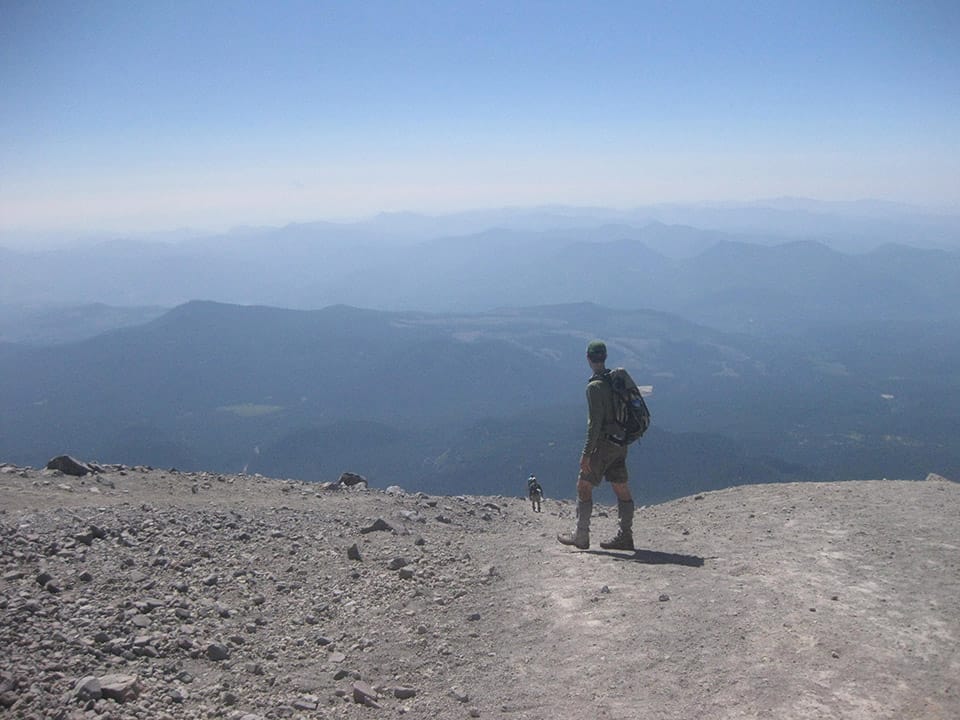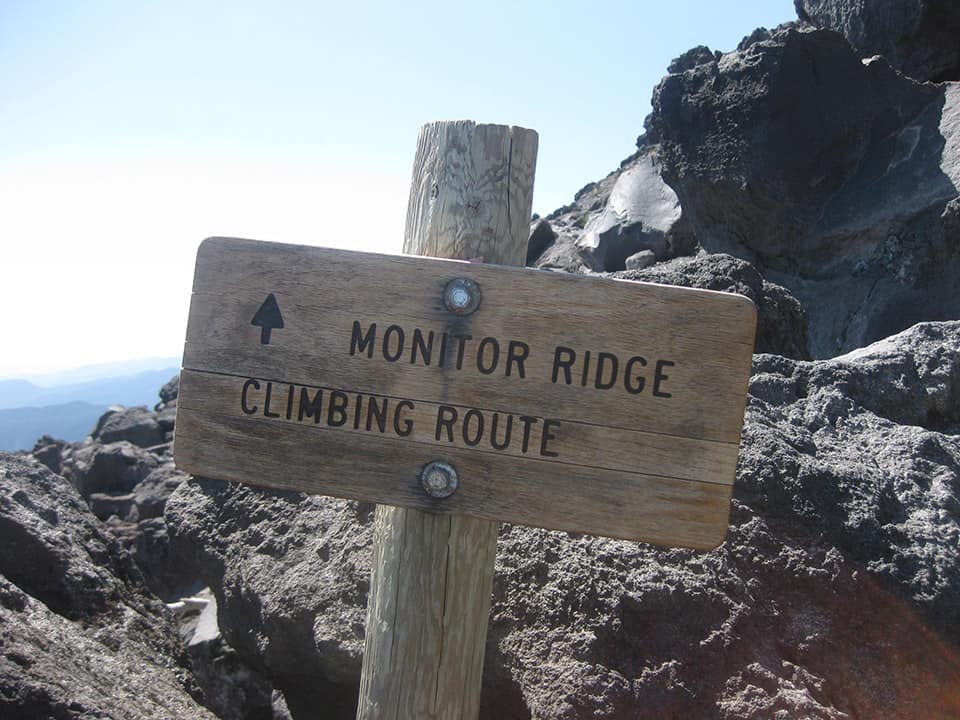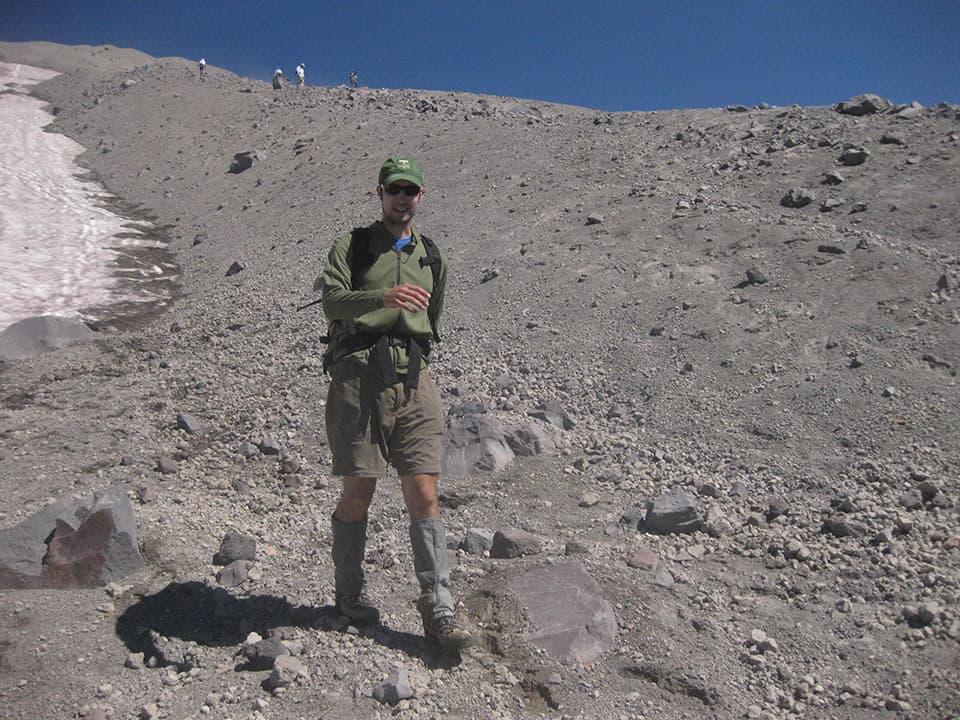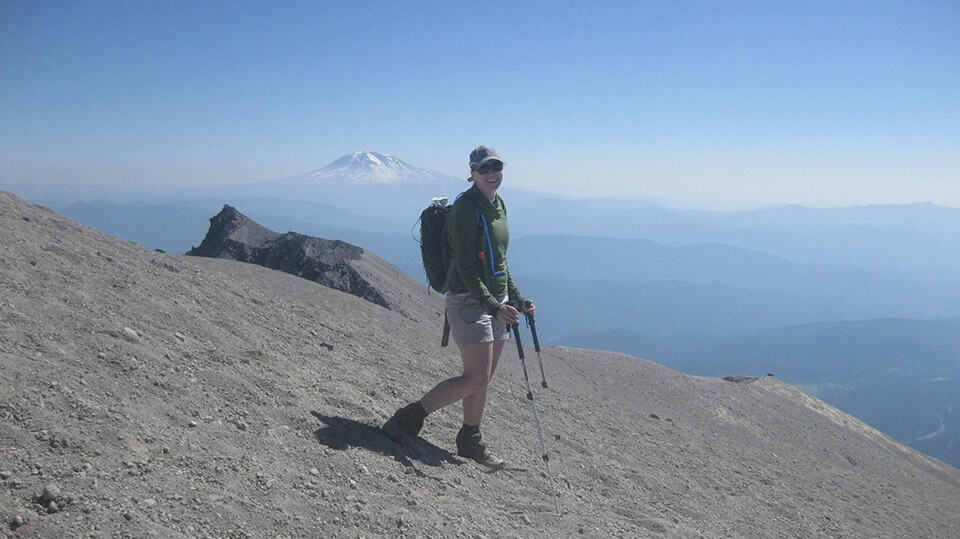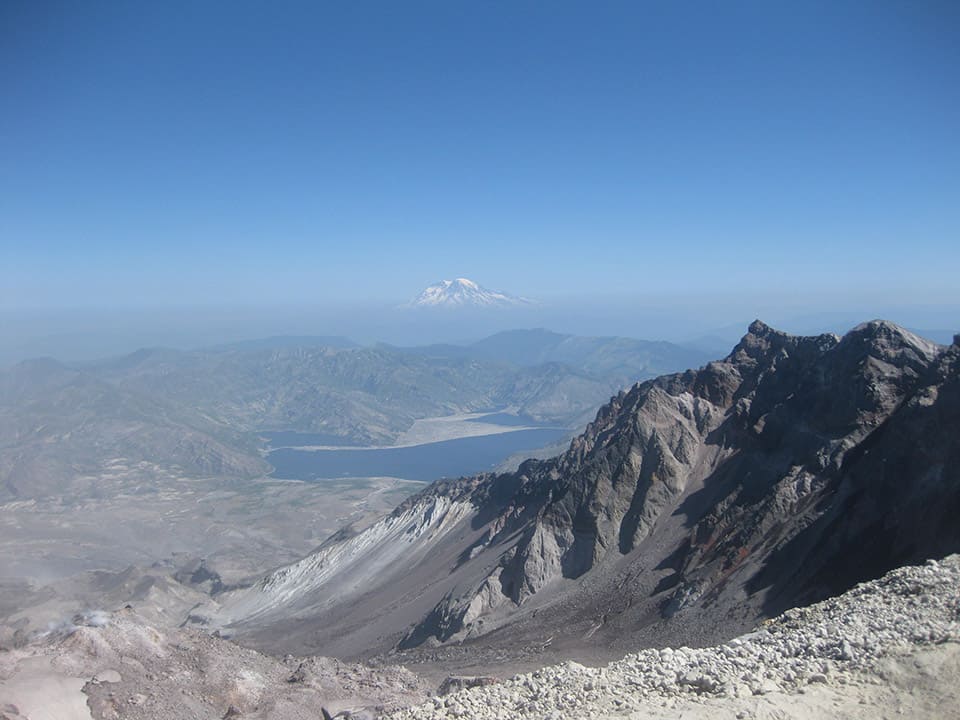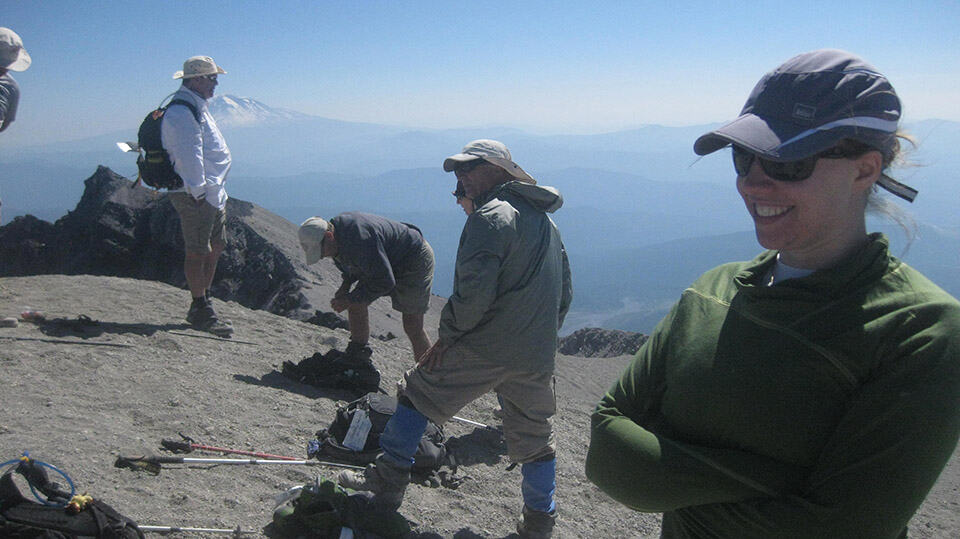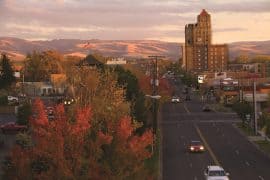A family tradition to the top of one of the Pacific Northwest’s most iconic peaks
written and photographed by | Dylan J. Darling
My favorite part of climbing Mount St. Helens is the view at the top.
Perched on the rim of the mountain’s massive crater, steam puffs up and rocks continually fall below. Climbing Mount St. Helens has become a family tradition—my mom shares my opinion about the view.
“Other mountains you are climbing up to sit on the top and look over vast horizons,” she told me. “And this you’re climbing up to look down into the volcano, into the crater.”
Mount St. Helens became the first of the larger Cascades I ever climbed, in 2001, and in the sixteen years since, it has become my most climbed. I highly recommend climbing the 8,365-foot mountain, but believe it’s wise to go along with someone familiar
with it.
For me, that’s Uncle Butch (real name Stephen Thomas). A retired doctor in Portland, he has climbed Mount St. Helens more than twenty times, seven of those before the volcano erupted in 1980. He lines up the permits each year and rounds up a climbing crew. I’ve joined him four times and my mom has joined six times. Stormy weather has turned us away from the summit only once.
Butch has climbed all the major Cascades in Oregon, but it’s Mount St. Helens, a two-hour drive into Washington, that he ascends annually. I asked him why. “The joy,” he told me. “It is a wonderful climb.”
Before the eruption, Mount St. Helens was nearly 1,300 feet taller. By comparison, Mount Hood is 11,250 feet and South Sister near Bend is 10,358 feet.
The eruption not only drastically changed the look of Mount St. Helens, it changed how a climber climbs the mountain. Butch told me the old preferred climber’s route he climbed with my grandpa, known as the Lizard Route, began at Spirit Lake. Climbing to the top used to involve bringing an ice ax and traveling across snow.
Climbers go up Mount St. Helens year-round, so winter climbers still encounter snow, but most climb the mountain in summer when the new route is free of snow and ice.
The primary climbing route, the Monitor Ridge Route, now starts at the Climber’s Bivouac Trailhead. To avoid thunderstorms, it’s best to climb up early in the morning and start heading down by late morning or early afternoon.
The bivouac provides primitive camping sites—vault toilets but no water or picnic tables—and many climbers stay there the night before their climb. Some of my favorite memories from Mount St. Helens were made at the bivouac, such as listening to college football on the radio with Butch on the eve of my first climb and another climber showing us a map of the mountain before it blew.
The climb typically takes eight hours total—four and a half hours up, three and a half hours down—according to the Mount St. Helens Institute, a nonprofit organization devoted to education about the mountain. It takes me about ten hours for the full trip, but I like to stop and take a lot of photos. No wildflower will be left undocumented.
The climb covers 5 miles, but I don’t typically think about miles when I’m climbing a mountain. Instead I think about how many feet I’m going up. The route up Mount St. Helens gains 4,500 vertical feet—six times the hike up to Multnomah Falls.
Some mountains are a slog, but thanks to Mount St. Helens’ ever-changing terrain that’s not the case. Lush pine forest covers the first couple of miles of the trail. Shortly after timberline the trail disappears and the real climbing begins. (Note: the last outhouse is shortly before this at about 2¼ miles from the bivouac.)
The route passes through rocky gullies, over a boulderfield and up an ash and scree slope. Boulders make for the biggest challenge on Mount St. Helens. Wooden poles stick up from the rock to mark the route, but often I look up and see I have veered far off course.
Ash high atop the mountain makes for its own obstacle. Ever walk up an escalator the wrong way? The soft ash can feel like that, making every two steps count for only one. There’s a clear view at the top from the slope, and the sight of other climbers relaxing, snapping photos and eating lunch, motivates me to join them.
Something to keep in mind when climbing Mount St. Helens: the top isn’t the end. You’ll still have to trek back off the mountain. “It’s harder to come down than it is to go up,” Butch told me, adding that he once had to coax a friend off the mountain with candy.
Stop and tighten your shoes before heading down. This will protect your toes from some of the pounding they are about to take.
The summit view and the adventure of the day make the climb and descent worth it. Seeing the crater up close gives perspective about the landmark mountain, visible from Portland, and the geologic forces that broke it apart.
“You realize it is alive,” Mary Darling, my mom, said. “Alive and well.”
PERMITS
The U.S. Forest Service requires a permit to climb on Mount St. Helens above 4,800 feet throughout the year, but demand is highest in summer. Permits for climbing between April 1 and Oct. 31 go on sale for $22 each on Feb. 1 each year (or the first weekday after if it falls on a weekend). Permits are available at mshinstitute.org and purchasers may buy up to twelve permits at a time.
Mount St. Helens Institute Executive Director Ray Yurkewycz said he has seen annual permit demand go from about 12,000 permits six years ago, when he joined the nonprofit organization, to about 20,000 permits in 2016.
Anyone hoping to climb on a prime summertime weekend should log on at 9 a.m. that day and brace for a website bogged by a flood of eager climbers.
The rush means even the quick might not earn their desired draw. “You are not necessarily going to get the date you want,” Yurkewycz said.
The U.S. Forest Service sets a limit of 500 climber permits per day during the summertime climbing season. Permits are free and unlimited during wintertime, from Nov. 1 to March 31, but the climb is longer because the Climbers Bivouac Trailhead is closed. Winter climbers must be prepared for the challenges of snow travel, so first-time climbers should stick to summer.
Yurkewycz recommended grabbing permits that work best for you or keeping a watch on purmit.com as your ideal climbing day approaches. Sort of a Stubhub for climbers, the website allows folks to sell permits at or below face value. Checking for midweek days increases the odds of finding available permits, even in August or early September.
“You can still climb this summer if you are flexible,” he said.
More info:
bit.ly/MSHpermits
purmit.com
GETTING THERE
From Seattle, take Interstate 5 south to exit 22 at Dike Access Road and drive east about 30 miles to Cougar. Go east on Lewis River Road (Forest Road 90) for 6.4 miles. Turn left onto Forest Road 83 and follow for 3 miles. Stay left onto Forest Road 81 and continue for about a mile. Turn right onto Forest Road 830 and go about a half mile to the Climbers Bivouac Trailhead.
More info:
EQUIPMENT
Pack what you would for a long day hike, including lots of water, a substantial lunch and plenty of snacks, plus these suggestions just for Mount St. Helens.
- Leather gloves: Protect your hands from rough or sharp rock, particularly in the boulder field. Fingerless bicycle gloves work great.
- Gaiters: Keeps ash from filling your boots when climbing up and down the ashy scree slope.
- Trekking pole: Helps keep you upright when hopping from boulder to boulder.


